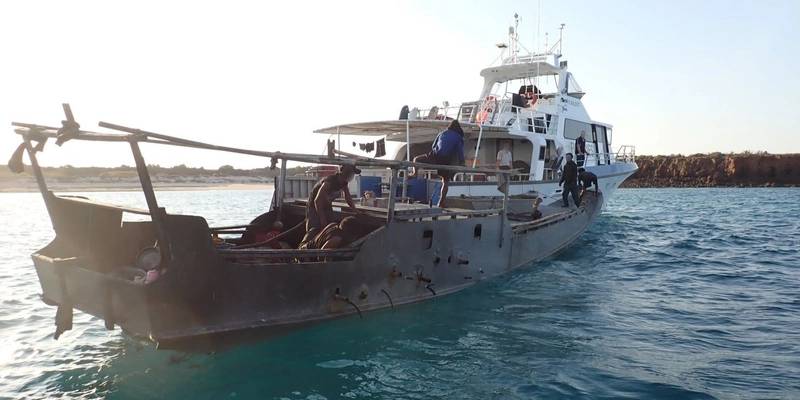South Australia algal bloom a ‘natural disaster,’ state’s premier says, as species wiped out – CBC

Report on the South Australian Algal Bloom and its Implications for Sustainable Development Goals
Executive Summary
A significant toxic algal bloom off the coast of South Australia has been officially declared a “natural disaster.” The event, unprecedented in scale, has caused extensive environmental damage and severe socio-economic disruption, directly challenging Australia’s progress towards several key Sustainable Development Goals (SDGs). The bloom, driven by the species Karenia mikimotoi and exacerbated by climate change-induced marine heatwaves, highlights the urgent need for integrated action on SDG 13 (Climate Action) and SDG 14 (Life Below Water). In response, state and federal governments have initiated a collaborative financial package, reflecting the principles of SDG 17 (Partnerships for the Goals), to address the immediate impacts on the environment, local economies, and community well-being.
Environmental Devastation: A Setback for SDG 14 (Life Below Water)
Scale and Mechanism of the Ecological Crisis
- Geographic Scope: The bloom covers an area of 4,500 square kilometres.
- Causative Agent: The overgrowth is attributed to the algal species Karenia mikimotoi.
- Lethal Impact: The algae damages fish gills and depletes water oxygen levels during decomposition, creating vast anoxic zones.
Impact on Marine Biodiversity and Ecosystems
- Species Loss: Over 400 distinct marine species have been killed, including fish, sharks, rays, and invertebrates, representing a catastrophic loss of biodiversity.
- Mortality Rate: Public monitoring has recorded over 13,850 dead animals.
- Long-Term Damage: Experts warn of prolonged effects as toxins bioaccumulate in the food chain and oxygen depletion hinders the recovery of fish populations for years, directly undermining targets for SDG 14 to sustainably manage and protect marine and coastal ecosystems.
Climate Change as a Primary Driver: The Imperative of SDG 13 (Climate Action)
The Role of Marine Heatwaves
- A marine heatwave beginning in 2024, which raised sea temperatures by approximately 2.5°C above average, is identified as a primary contributor to the bloom’s growth.
- Scientific analysis suggests that warmer ocean temperatures, a direct consequence of climate change, create more hospitable conditions for harmful algal species to thrive, particularly through milder winters.
Aggravating Environmental Factors
- Climate change-induced increases in rainfall wash more land-based nutrients into coastal waters, further fuelling algal growth.
- This event serves as a critical indicator of the tangible consequences of failing to meet the targets of SDG 13, demonstrating the direct link between climate inaction and severe environmental degradation.
Socio-Economic Consequences: Challenges to SDG 8 and SDG 11
Disruption to Economic Activity and Livelihoods (SDG 8)
- Fisheries and Aquaculture: The local fishing industry has been severely disrupted. Oyster and mussel farms have been forced to cease operations due to contamination from waterborne toxins, threatening decent work and economic stability.
- Tourism: The ecological damage and beach closures have negatively impacted the regional tourism sector, a key source of local revenue.
Impact on Sustainable Communities (SDG 11)
- The algal bloom represents a significant threat to the resilience and sustainability of coastal communities that depend on a healthy marine environment.
- The declaration of a “natural disaster” acknowledges the profound impact on the social and economic fabric of the region.
Collaborative Response and Future Mitigation: Activating SDG 17 (Partnerships for the Goals)
Government Intervention and Financial Support
- The state government has officially declared the event a “natural disaster.”
- A combined $25 million support package has been established through a partnership between the state and federal governments.
Strategic Allocation of Resources
The joint funding demonstrates a commitment to SDG 17 and is allocated to address the crisis on multiple fronts:
- Cleanup Efforts: Mitigating the immediate environmental contamination.
- Scientific Research: To better understand the bloom’s dynamics and prevent future occurrences.
- Business Support: Providing financial assistance to affected industries and workers to support economic recovery in line with SDG 8.
Challenges and Outlook
Experts note that there is currently no effective solution for removing an algal bloom of this magnitude once it has occurred. This reality underscores that preventative action, primarily through robust implementation of SDG 13 (Climate Action) and SDG 14 (Life Below Water), is the only viable long-term strategy to protect marine ecosystems and the communities that rely on them.
SDGs Addressed in the Article
SDG 14: Life Below Water
- The article’s central theme is a massive toxic algal bloom that has “devastated hundreds of species of marine life.” This directly relates to the goal of conserving and sustainably using the oceans, seas, and marine resources. The text details the death of over 400 species, the killing of fish by affecting their gills, and the depletion of oxygen in the water, all of which are severe threats to marine ecosystems.
SDG 13: Climate Action
- The article explicitly links the algal bloom to climate change. It states that the bloom was “aggravated by rising ocean temperatures” and a “marine heat wave that started in 2024, when sea temperatures were about 2.5 C warmer than usual.” It also quotes a professor who states these blooms could become more common as “climate change makes waters more hospitable to the toxic algae.”
SDG 8: Decent Work and Economic Growth
- The economic consequences of the environmental disaster are highlighted. The article mentions that the bloom has “disrupted local tourism and fishing” and “forced oyster and mussel farms to temporarily shut down.” The government’s provision of a support package for “business support” further underscores the negative impact on local economies and livelihoods.
Specific SDG Targets Identified
Targets under SDG 14: Life Below Water
- Target 14.1: By 2025, prevent and significantly reduce marine pollution of all kinds, in particular from land-based activities, including marine debris and nutrient pollution.
- The article connects the bloom’s growth to an influx of “land-based nutrients into the water” due to increased rainfall from climate change, which directly addresses the issue of nutrient pollution.
- Target 14.2: By 2020, sustainably manage and protect marine and coastal ecosystems to avoid significant adverse impacts.
- The article describes a failure to protect the ecosystem, resulting in “an unprecedented event” that has “devastated hundreds of species of marine life” and could have “prolonged effects on the local ecosystem.” The government’s response with cleanup and research efforts is an attempt to manage this adverse impact.
- Target 14.a: Increase scientific knowledge, develop research capacity and transfer marine technology.
- The government’s response includes a “$25 million” support package allocated for “research” to tackle the outbreak. The article also relies on the expertise of marine science professors to explain the phenomenon, highlighting the importance of scientific knowledge.
Targets under SDG 13: Climate Action
- Target 13.1: Strengthen resilience and adaptive capacity to climate-related hazards and natural disasters in all countries.
- The state Premier labels the algal bloom a “natural disaster” aggravated by climate change factors like a “marine heat wave.” The government’s financial support package is a measure to build resilience and help the community and environment adapt to this climate-related hazard.
Targets under SDG 8: Decent Work and Economic Growth
- Target 8.9: By 2030, devise and implement policies to promote sustainable tourism that creates jobs and promotes local culture and products.
- The article states that the bloom has “impacted tourism,” demonstrating the vulnerability of this economic sector to environmental degradation. This highlights the need for policies that ensure tourism is sustainable and resilient to such shocks.
Indicators for Measuring Progress
Indicators for SDG 14: Life Below Water
- Indicator for Target 14.1 (Nutrient Pollution): The article provides a direct measure of the bloom’s scale, stating it “spans an area 4,500 square kilometres in size.” This can be used as an indicator of the extent of coastal eutrophication.
- Indicator for Target 14.2 (Ecosystem Health): The article provides quantifiable data on the impact, including “more than 400 different species of marine life have been killed” and “13,850 dead animals… have been recorded.” These numbers serve as direct indicators of the ecosystem’s degradation.
Indicators for SDG 13: Climate Action
- Indicator for Target 13.1 (Climate Hazards): A specific metric of a climate-related hazard is given: “sea temperatures were about 2.5 C warmer than usual.” This temperature anomaly is a direct indicator of the marine heat wave that contributed to the disaster.
Indicators for SDG 8: Decent Work and Economic Growth
- Indicator for Target 8.9 (Sustainable Tourism): The article implies economic indicators through the description of negative impacts, such as the “disrupted local tourism” and the forced, temporary “shut down” of “oyster and mussel farms.” The “$12.5 million Cdn support package” for “business support” is a financial indicator of the economic damage and response.
Summary of Findings
| SDGs | Targets | Indicators |
|---|---|---|
| SDG 14: Life Below Water |
|
|
| SDG 13: Climate Action |
|
|
| SDG 8: Decent Work and Economic Growth |
|
|
Source: cbc.ca

What is Your Reaction?
 Like
0
Like
0
 Dislike
0
Dislike
0
 Love
0
Love
0
 Funny
0
Funny
0
 Angry
0
Angry
0
 Sad
0
Sad
0
 Wow
0
Wow
0













































































